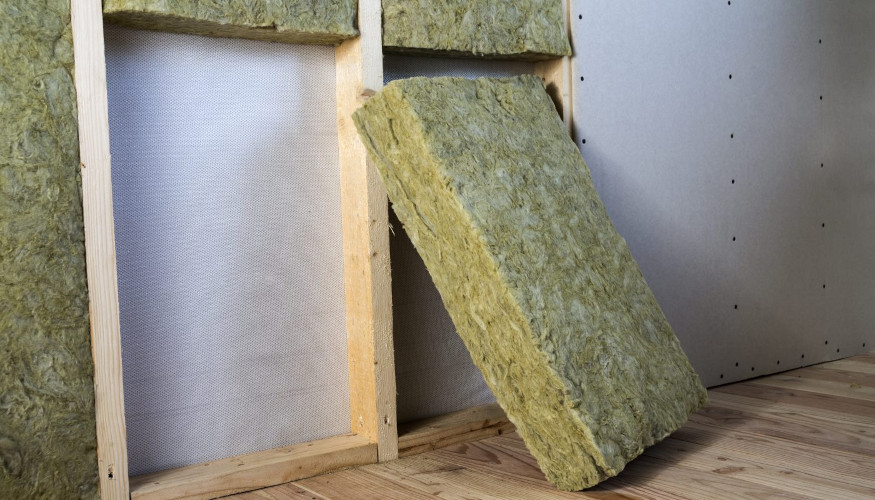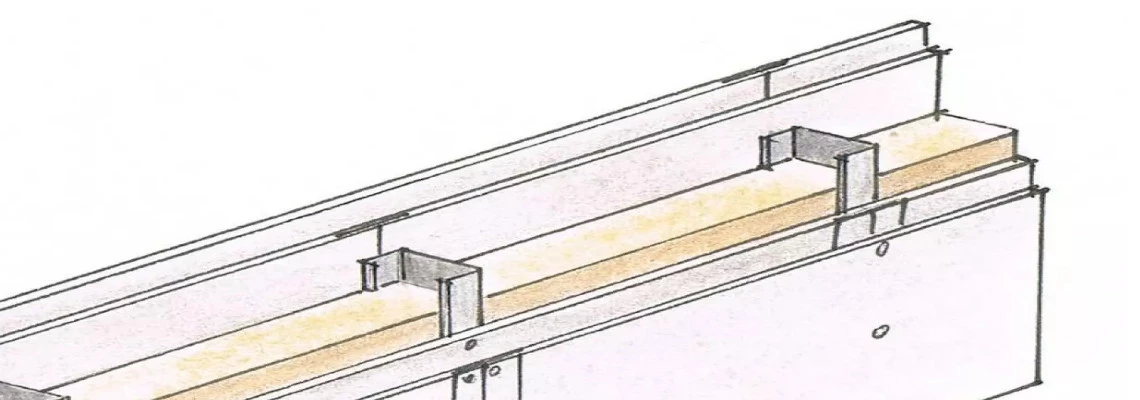
DECODING THE ENIGMA: IS AN AIR GAP NECESSARY FOR MINERAL WOOL INSULATION?*
When it comes to insulating our homes, there are various options available, each with its own set of considerations. One commonly asked question is whether mineral wool insulation requires an air gap. In this blog post, we will delve into this topic to understand the importance of proper installation techniques for mineral wool insulation and whether an air gap is necessary. By the end of this article, you will have a clearer understanding of how to ensure optimal insulation performance and make informed decisions for your insulation needs.
MINERAL WOOL STRUCTURE | WHY MINERAL WOOL DOES NOT NEED AN AIR GAP?
The fibres of mineral wool create a porous structure with numerous empty spaces, also known as air pockets or voids. These empty spaces are essential for the insulation properties of mineral wool, as they trap air and reduce heat transfer through conduction and convection. The fibres in mineral wool intertwine and interlock with each other, forming a cohesive network. This interlocking arrangement enhances the overall strength and stability of the material.
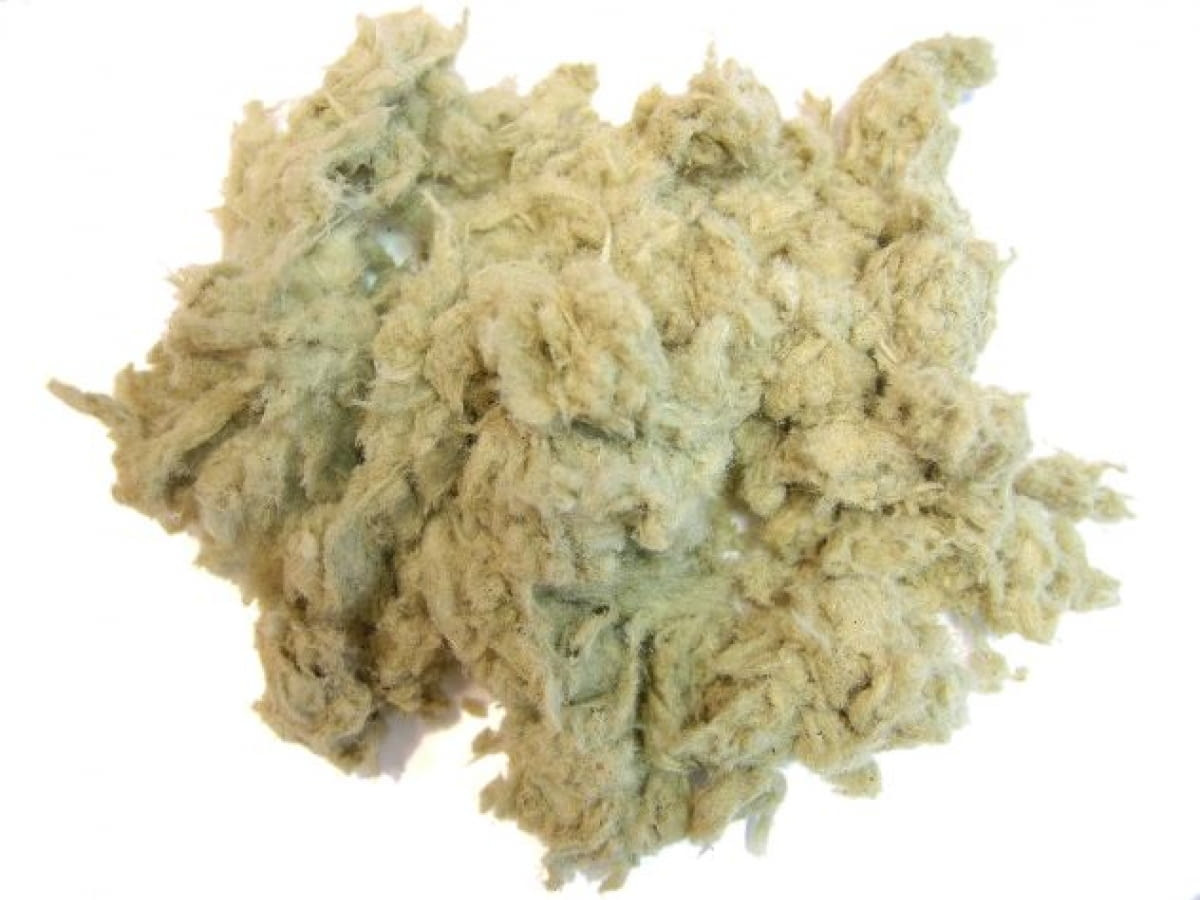
Mineral wool fibres are also elastic and have the ability to interlock with each other, creating a dense structure. As a result, mineral wool does not require a specific air gap or additional air layer to fulfil its insulation functions.
Therefore, the construction of mineral wool allows for its installation without an air gap. Leaving an air gap would only result in unnecessary cooling of the mineral wool on its outer side. It should be further emphasised that the structure of mineral wool enables it to breathe, making a ventilation gap unnecessary.
The main advantages of mineral wool that allow for effective insulation without the need for an air gap are:
ACCUMULATION CAPACITY
Mineral wool possesses some heat accumulation properties. Heat accumulation refers to a material's ability to absorb, store, and release heat depending on the surrounding conditions.
Mineral wool, due to its dense fibre structure and the presence of empty spaces within the material, can retain heat. When the surrounding temperature is higher than the temperature inside a space, mineral wool can absorb the excess heat and store it within its structure. Then, when the external temperature decreases, mineral wool can release the accumulated heat, aiding in maintaining a stable temperature inside the space.
INSULATION PROPERTIES
Mineral wool has low thermal conductivity, meaning it has the ability to restrict the flow of heat. Its dense fibre structure and the presence of air pockets within the material make it an efficient thermal insulator.
PREVENTION OF CONVECTION
The dense structure of mineral wool limits the airflow within the material, reducing the occurrence of convection, which is the transfer of heat through air movement.
PREVENTION OF THERMAL BRIDGES
Mineral wool fibres bond together, creating a continuous and uniform structure. The absence of an air gap between the material and the construction surface eliminates potential thermal bridges, which are areas where uncontrolled heat transfer and loss of insulation could occur.
MINERAL WOOL INSULATION INSTALLATION TIPS
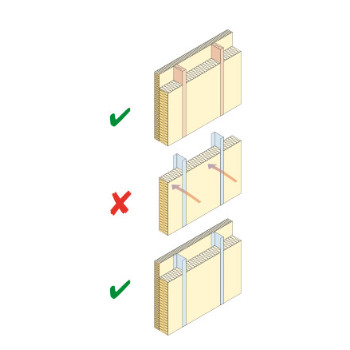 Timber and steel studs. In order to achieve maximum insulation effectiveness in enclosed constructions, it is essential to ensure thorough filling of voids with mineral wool, leaving no gaps between the insulation and the structure. For timber frames and light steel frames, insulation must be placed across studs to prevent thermal bridging.
Timber and steel studs. In order to achieve maximum insulation effectiveness in enclosed constructions, it is essential to ensure thorough filling of voids with mineral wool, leaving no gaps between the insulation and the structure. For timber frames and light steel frames, insulation must be placed across studs to prevent thermal bridging.
This meticulous approach eliminates any potential airflow, thereby preventing subsequent heat losses.
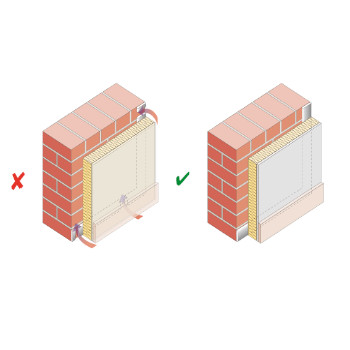 Exterior. If the insulation is fixed to the exterior it will require some form of rain protection. The laminated thermal wall panel – comprised of mineral wool insulation board bonded to tapered edge, vapour-check plasterboard – must be continuously sealed at all perimeter edges against the external wall to eliminate air infiltration between the panel and external wall. This applies to panels fitted directly to external wall with adhesive and/or mechanical fixings.
Exterior. If the insulation is fixed to the exterior it will require some form of rain protection. The laminated thermal wall panel – comprised of mineral wool insulation board bonded to tapered edge, vapour-check plasterboard – must be continuously sealed at all perimeter edges against the external wall to eliminate air infiltration between the panel and external wall. This applies to panels fitted directly to external wall with adhesive and/or mechanical fixings.
Air movement in an unsealed gap will degrade the thermal resistance of the panel insulation and result in heat loss through the external wall.
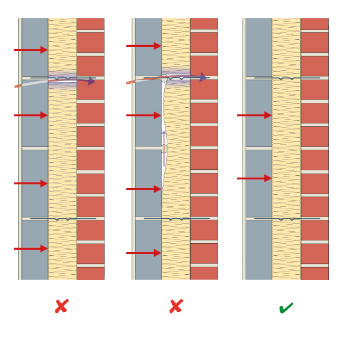 Full fill Insulation. When insulation fully fills the cavity, the material should be water-resistant so it does not absorb water from the outer leaf, which would destroy its thermal value. The insulation can be built-in during wall construction in the form of slabs, or formed in-situ when injected into the cavity after the wall has been built. In all cases, there should be no gaps between built-in slab insulation, or voids within injected insulation. When installed, the product should be in intimate contact with the inner leaf of masonry to ensure full contact and there should be no cavities between the masonry and the insulation to avoid air circulation degrading the thermal resistance. When placing insulation external to a masonry cavity wall, it is important to note that the cavity between the leaves must be effectively sealed, so that it cannot communicate with the external air or another unheated space. If not effectively sealed, there is a substantial risk that the insulation will be bypassed and not be effective. Fully filling in the cavity is an important step to enable sealing as it reduces free airspace and makes effective sealing at the perimeter much more likely.
Full fill Insulation. When insulation fully fills the cavity, the material should be water-resistant so it does not absorb water from the outer leaf, which would destroy its thermal value. The insulation can be built-in during wall construction in the form of slabs, or formed in-situ when injected into the cavity after the wall has been built. In all cases, there should be no gaps between built-in slab insulation, or voids within injected insulation. When installed, the product should be in intimate contact with the inner leaf of masonry to ensure full contact and there should be no cavities between the masonry and the insulation to avoid air circulation degrading the thermal resistance. When placing insulation external to a masonry cavity wall, it is important to note that the cavity between the leaves must be effectively sealed, so that it cannot communicate with the external air or another unheated space. If not effectively sealed, there is a substantial risk that the insulation will be bypassed and not be effective. Fully filling in the cavity is an important step to enable sealing as it reduces free airspace and makes effective sealing at the perimeter much more likely.
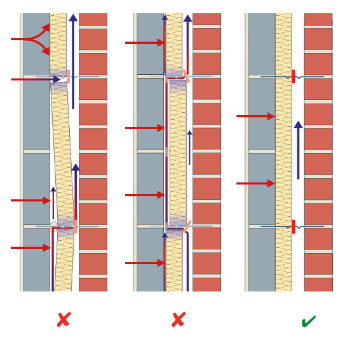 Partil fill Insulation. Insulation boards must be in full contact with the supporting inner leaf and tightly fitted at joints. Gaps create air circulation that degrades thermal resistance of insulation. The slab insulation partially fills the cavity, leaving a small residual airspace between the outer leaf and the insulation. However, it must be be in full contact with the inner leaf to avoid air circulation degrading the thermal resistance. The insulation is supported on the metal wall ties and is held back to the inner leaf with clips. There should be no gaps in the insulation layer between slabs.
Partil fill Insulation. Insulation boards must be in full contact with the supporting inner leaf and tightly fitted at joints. Gaps create air circulation that degrades thermal resistance of insulation. The slab insulation partially fills the cavity, leaving a small residual airspace between the outer leaf and the insulation. However, it must be be in full contact with the inner leaf to avoid air circulation degrading the thermal resistance. The insulation is supported on the metal wall ties and is held back to the inner leaf with clips. There should be no gaps in the insulation layer between slabs.
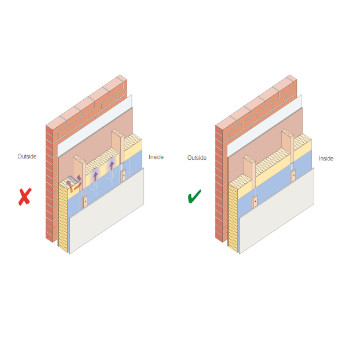 Lightweight Frame Construction. Air tightness of the timber frame is required to maintain thermal resistance of air permeable insulation. It is achieved using a vapour barrier with perfectly sealed joints formed against the studs and contiguous with insulation, to avoid gaps that create air movement and subsequent heat loss. Frame construction describes lightweight frames made from timber with associated linings. These individual wall elements may be either structural or purely infill between more massive structural frame. Completely fill void depths to restrict free airspaces. In frame construction, a water vapour membrane is usually necessary and will normally also provide the air barrier. The air barrier should be contiguous with the insulation as well as other building elements. Joints must also be properly sealed. Insulation is usually placed between studs in a timber frame but may also be placed between and across the studs in timber frames where high levels of thermal performance are required. In all cases insulation should be contiguous with the air barrier.
Lightweight Frame Construction. Air tightness of the timber frame is required to maintain thermal resistance of air permeable insulation. It is achieved using a vapour barrier with perfectly sealed joints formed against the studs and contiguous with insulation, to avoid gaps that create air movement and subsequent heat loss. Frame construction describes lightweight frames made from timber with associated linings. These individual wall elements may be either structural or purely infill between more massive structural frame. Completely fill void depths to restrict free airspaces. In frame construction, a water vapour membrane is usually necessary and will normally also provide the air barrier. The air barrier should be contiguous with the insulation as well as other building elements. Joints must also be properly sealed. Insulation is usually placed between studs in a timber frame but may also be placed between and across the studs in timber frames where high levels of thermal performance are required. In all cases insulation should be contiguous with the air barrier.
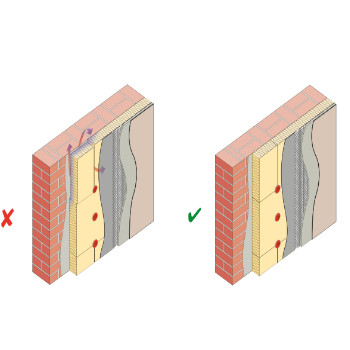 External Insulation. Insulation boards must be in full contact with the wall and tightly fitted at joints. Any protuberance from the substrate that causes misalignment of the insulation boards is a potential source of heat loss. Gaps create air movement that degrades thermal resistance of insulation and heat is lost through external wall.
External Insulation. Insulation boards must be in full contact with the wall and tightly fitted at joints. Any protuberance from the substrate that causes misalignment of the insulation boards is a potential source of heat loss. Gaps create air movement that degrades thermal resistance of insulation and heat is lost through external wall.
The insulation fixed with plastic pins or glued to a masonry wall before the exterior render is applied.
The masonry surface should be flat and smooth to ensure full contact and there should be no cavities between the masonry and the insulation to avoid air circulation degrading the thermal resistance.
CONCLUSION
In conclusion, mineral wool insulation can be installed effectively without the need for an air gap. The breathable nature of mineral wool eliminates the requirement for a ventilation gap. By understanding the construction and properties of mineral wool, we can confidently utilise it as a reliable and effective insulation material, optimising energy efficiency and enhancing thermal comfort in buildings.
Related articles:
TOP INTERIOR WALL INSULATION PRODUCTS: A COMPREHENSIVE GUIDE
THE SOUNDPROOFING POWER OF WOOL: UNVEILING THE TOP CHOICES
ROCKWOOL INSULATION: IS IT SAFE FOR YOU AND YOUR HOME?
Bibliography:
1.eurima.org, European Insulation Manufacturers Association, ‘How to install mineral wool insulation’, accessed 12 July 2023
Pictures credit:eurima.org
*All the information provided in the content published on Insulationgo blog is for informational and educational purposes only. Insulationgo LTD makes every effort to ensure the accuracy and timeliness of the content, but we do not assume any responsibility for any errors or omissions.
The information presented on this blog should not be considered as professional advice or a substitute for consulting relevant experts. Before making any purchase decisions or taking action based on the information presented here, it is strongly recommended to contact the product manufacturer directly to verify the details and ensure its suitability for your specific needs.
By using this blog, you acknowledge and agree that Insulationgo LTD shall not be held liable for any damages, losses, or inconveniences arising from the use or reliance on the information provided herein. This limitation of liability applies to all users of the blog, including but not limited to visitors, readers, and subscribers.










































































































